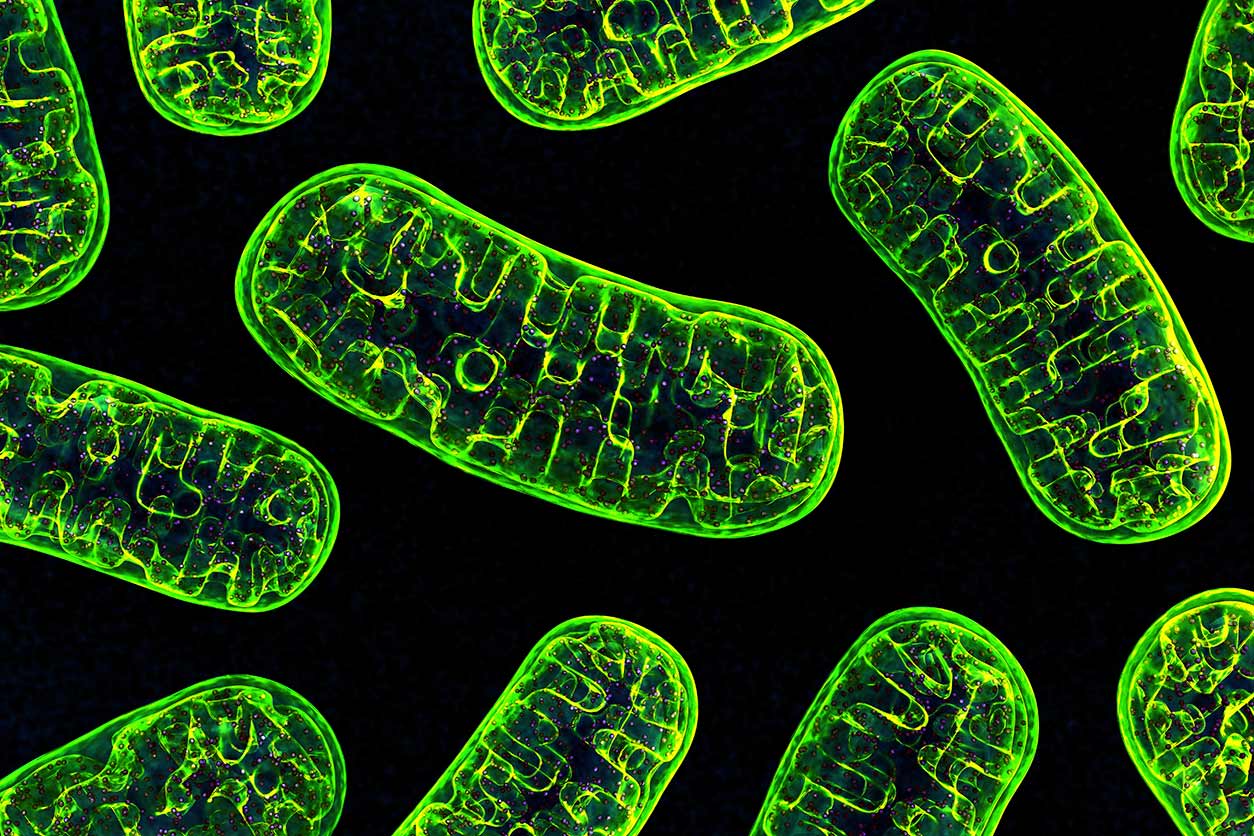Mitochondria are typically known as the energy powerhouse of the cell, but a new study by NIEHS researchers suggests these little organelles do more than provide fuel. They can drive alterations in the epigenome, which is the assortment of chemical tags on DNA that affect how genes are turned on or off.
 Santos, a molecular geneticist by training, is an expert in mitochondria and mitochondrial metabolism. (Photo courtesy of Steve McCaw)
Santos, a molecular geneticist by training, is an expert in mitochondria and mitochondrial metabolism. (Photo courtesy of Steve McCaw)The researchers showed that in mice, disrupting mitochondrial function early in development led to epigenetic changes as well as gene expression changes that persisted throughout life. The study was published in the journal Cell Reports on Sept. 15.
“These results raise the possibility that mitochondria could be a unifying target of many environmental stressors that have been shown to affect the epigenome early in development, including endocrine disruptors, heavy metals, PFAS [per- and polyfluoroalkyl substances], and air pollutants,” said Janine Santos Ph.D., an NIEHS staff scientist who co-led the study.
Early disruption, long-term changes
Researchers have long been interested in how environmental insults early in life set the stage for diseases such as cancer and obesity. “There are all kinds of hypotheses to explain this scientific concept, which we call developmental origins of health and disease,” said Santos.
Her preferred explanation involves epigenetics. Santos thinks early developmental exposures could somehow shuffle the methyl groups on DNA, ultimately altering the regulation of gene expression in ways that influence health outcomes.
“What if mitochondrial function early in development is the molecular means through which you could be reestablishing the epigenetic landscape?” she said.
A mouse of different color
 Woychik also heads the NIEHS Mammalian Genome Group, which studies the role of the epigenome in an organism’s response to environmental exposures. (Photo courtesy of Steve McCaw)
Woychik also heads the NIEHS Mammalian Genome Group, which studies the role of the epigenome in an organism’s response to environmental exposures. (Photo courtesy of Steve McCaw)Santos and co-lead author Rick Woychik, Ph.D., NIEHS and National Toxicology Program director, explored that question in a previous study. The researchers discovered that when they wiped out the mitochondria in cells, DNA methylation changed in ways that affected gene expression.
“But we wanted to know if we could see these same effects in a live animal, under conditions that were more relevant to human health,” said Santos.
Fortunately, Woychik had previously characterized an animal model that was perfectly suited for that purpose. The model, known as the viable yellow agouti mouse, carries a quirk in its genome that causes its fur to change from yellow to agouti — a salt-and-pepper look — as more methyl groups are attached to the coat color gene.
Persistent effects
In the current study, the researchers exposed the color-coded mice while they were still in the womb to mild doses of rotenone, a widely studied pesticide that disrupts mitochondrial function. They found that mothers exposed to the pesticide had more offspring with yellow fur than mothers not exposed.
 Mitochondria are rod-shaped organelles responsible for producing about 90% of the chemical energy that cells need to survive.
Mitochondria are rod-shaped organelles responsible for producing about 90% of the chemical energy that cells need to survive.The scientists further studied the offspring and found that the same epigenetic changes that showed up in the skin also were present in internal organs such as the liver. Those changes persisted until the animals were at least 18 months old, the equivalent of 45 human years, which is remarkable because the animals were last exposed to rotenone prior to weaning.
“At such low doses, we did not see any toxic effects, but we did see significant molecular effects that were long-lasting,” said Woychik. “It shows that even subtle and temporary disruptions to mitochondria can reprogram the epigenome in ways that could have long-term health consequences.”
Going forward, the researchers will test other chemicals known to alter the epigenome in early development for their ability to change mitochondrial function. Learning how substances that disrupt mitochondria can drive epigenetic changes and potentially affect health outcomes deserves more attention, according to Santos.
Citations:
Lozoya OA, Xu F, Grenet D, Wang T, Grimm SA, Godfrey V, Waidyanatha S, Woychik RP, Santos JH. 2020. Single nucleotide resolution analysis reveals pervasive and long-lasting DNA methylation changes by developmental exposure to a mitochondrial toxicant. Cell Reports 32(11):e108131.
Lozoya A OA, Martinez-Reyes I, Wang T, Grenet D, Bushel P, Li J, Chandel N, Woychik RP, Santos JH. 2018. Mitochondrial nicotinamide adenine dinucleotide reduced (NADH) oxidation links the tricarboxylic acid (TCA) cycle with methionine metabolism and nuclear DNA methylation. PLoS Biol 16(4):e2005707.
(Marla Broadfoot, Ph.D., is a contract writer for the NIEHS Office of Communications and Public Liaison.)










